GCC banks eye a brighter future
28 July 2023

Against a backdrop of booming profits, robust liquidity and healthy loan books, GCC banks remain in generally strong fettle in 2023.
Even if performance levels this year are unlikely to match the surging metrics witnessed last year, when the post-pandemic revival drove exceptional growth stats, most regional lenders have little to fear and much to gain from regional and global conditions.
The global interest rate climate remains a source of valuable support for Gulf banks. Even if this year does not see the fat net interest margins (NIMs) that led to much of the profit generated in 2022, the first-quarter 2023 results for listed Gulf banks still show healthy earnings.
Banks in the largest markets, such as Saudi Arabia, the UAE and Kuwait, have been riding the yield curve and, while the cost of funds has increased, asset yields have widened further. Analysts say the growth in loan portfolios and asset volumes has continued this year.
“We are seeing profitability metrics improving, and that’s due to the higher rates following the dollar,” says Redmond Ramsdale, head of Middle East Bank Ratings at Fitch Ratings.
“And we’ve seen loan impairment charges coming down as banks have been building up their provisions and dealing with the pandemic. Certainly on profitability, we’re back to pre-pandemic levels, if not slightly above them.”
Broad-based growth
Bank performances reflect a confluence of factors. In the UAE, according to analysis from CI Ratings, profit growth is largely due to higher margins and net interest income, but also because provisioning expenses have come down significantly as banks see lower levels of new non-performing loan (NPL) classification and good recoveries. This is also related to the improving real estate environment.
Kamco Invest research shows net profit for listed banks in the GCC in the first quarter of this year benefitted from a steep quarterly increase in non-interest income that more than offset a sequential decline in interest income in Qatar and Kuwait.
In addition, lower provisions booked by banks in the region also supported bottom-line performance. As a result, aggregate net profits saw the biggest quarterly growth since the pandemic at 17 per cent to reach $13.4bn. The sequential increase in net profit was broad-based across the GCC.
There are some causes for concern. For one thing, GCC banks now have to grapple with an increased cost of funds. According to the Kamco figures, these have gone from 1.9 per cent in the previous quarter to a multi-quarter high of 2.5 per cent during the first three months of 2023.
But overall, GCC banks have enjoyed success in containing costs, as reflected in total operating expenses registering a decline of 3.1 per cent to $11.2bn during the first quarter of 2023, after consistent growth during the three previous quarters, according to Kamco figures.
The downturn in loan loss provisions – which increased in the 2020-22 period, driven by the pandemic impact – has proved a boon. Figures show these provisions stood at $3.1bn in the first quarter of this year, down from $3.3bn in the previous quarter.
Macro conditions
Analysts see the macroeconomic environment as playing a decisive role in supporting GCC bank performances.
“Reasonable oil prices are supporting liquidity in the system and the level of government and government-related deposits,” says Ramsdale.
“Government and government-related entity (GRE) deposits make up about 25 to 30 per cent of sector deposits, and with the increase in oil prices, we’ve seen a slight increase in these levels.”
According to CI Ratings, the largest banks in the region have distinct competitive advantages in terms of franchise, margins, cost efficiency, generally well-performing loan books and diversified earnings.
GCC banks were well placed for rising interest rates because they have quite a high base of current account and savings accounts (CASA) and a high proportion of short-term loans, says Ramsdale.
“The asset side has been repricing quickly. We have seen some migration from these low-cost CASA to term, but there is still a big proportion that’s very low cost, and that supports profitability metrics,” he says.
There has been no sign of significant deterioration in asset quality. “The end of forbearance didn’t really impact ratios too much, but interest rates have gone up a lot, and we expect some pressure on affordability. We, therefore, do expect stage three loans to start ticking up,” says Ramsdale.
Loan outlook
Lending has risen overall, although not as strongly as customer deposits, which resulted in a loan-to-deposit ratio for the GCC banking sector of 78.5 per cent in the first quarter of 2023.
Saudi Arabia stands out here, with more sector liquidity tightening reflecting stronger loan growth. Last year it was 15 per cent, significantly outpacing deposit growth of 9 per cent, says Fitch.
“The Saudi loan-to-deposit ratio of around 100 per cent is the highest it’s been in about 15 years, and it’s the opposite of what we’ve seen in other GCC markets,” says Ramsdale. “The UAE loan-to-deposit ratio hasn’t been this low for 10 years, reflecting the ample liquidity going into the UAE.”
In the kingdom, the government has been supplying additional liquidity from oil revenues that has gone into government agencies, such as the Public Investment Fund. That represented a change from the past, when that liquidity was largely channelled through the banking system.
Fitch is expecting the kingdom’s explosive recent loan growth to come down to about 12 per cent this year with a tightening of state subsidies putting pressure on housing affordability.
External funding
In Qatar, the big story is the composition of the funding base. Although there has been an improving trend in 2022 and the first quarter of 2023, CI Ratings notes that there is still a heavy dependence on wholesale funding, particularly offshore wholesale funding.
Ratings agency S&P says Qatari banks have the highest recourse to external funding among the GCC, with the system’s loan-to-deposit ratio reaching 124 per cent at the end of March 2023.
This resulted in an overall funding gap (total domestic loans minus total resident deposits) of $112bn, equivalent to almost two times the public sector deposits.
The high reliance on external funding is still a credit weakness for Qatari banks, says Amin Sakhr, director of financial institutions at Fitch Ratings.
“There’s some positivity that’s been observed since last year on the back of higher hydrocarbon revenues, which means domestic liquidity is improving, so banks are becoming less and less reliant on external funding. In the UAE and Saudi Arabia, this has traditionally been about 5-10 per cent of system deposits.”
The GCC will experience solid operating environment conditions, given that healthy oil prices will underwrite government spending
Performance prospects
In the UAE, credit demand will drive loan growth, but margins will moderate in line with interest rates. For some banks, their continuing strong NPL recovery will boost earnings performance.
The UAE’s largest banks, such as Fab and Emirates NBD, also entertain growth ambitions beyond the country's borders that will help them grow their balance sheets.
According to S&P, UAE banks are in a comfortable net external asset position and their loan-to-deposit ratios are among the strongest in the region. Banks have accumulated local deposits over the past 15 months amid muted lending growth. The ratings agency does not expect an acceleration of lending, so UAE banks’ funding profiles should continue to strengthen.
In Oman, customer deposits grew to $67bn in the first quarter of 2023, compared to $63.4bn in the same quarter of 2022.
While Omani banks are benefitting from rising interest rates, higher competition for deposits could translate into a higher cost of funds, which could impact margins. Analysts say that the benefits to banks of a rise in interest rates may be lower in Oman than in the other markets.
In Bahrain, banks will likely continue benefiting from the prevailing high-interest rate environment for the remainder of 2023.
The country’s retail banks’ loan-to-deposit ratios have been consistently below 80 per cent for the past five years, suggesting that local deposits and a significant portion of external liabilities are being recycled into government and local central bank exposures.
In contrast, Kuwait has a funding profile dominated by customer deposits, which have proved stable. Only 20 per cent of Kuwait’s deposits are from the government or GREs.
Like their Saudi counterparts, Kuwaiti banks have room to attract foreign funding. Moreover, notes S&P, the Saudi riyal’s peg to the dollar and the relative stability of the Kuwaiti dinar exchange rate – thanks to its peg to a basket of currencies – mean that even if this flow is recycled locally, foreign currency risks are likely to remain in check.
Looking ahead, the GCC will experience solid operating environment conditions, given that healthy oil prices will underwrite government spending. This should underpin lending growth and maintain the region’s top lenders’ buoyant state into 2024.
Exclusive from Meed
-
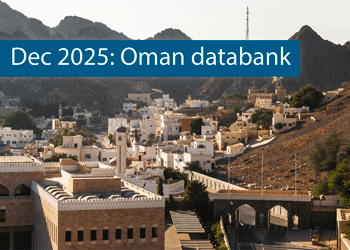 Oman’s growth forecast points upwards
Oman’s growth forecast points upwards24 December 2025
-
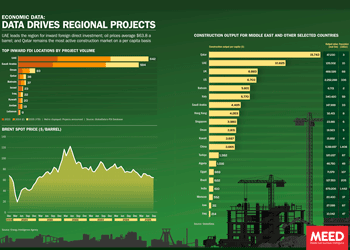 December 2025: Data drives regional projects
December 2025: Data drives regional projects23 December 2025
-
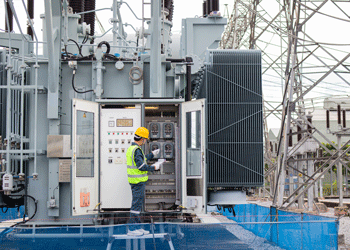 Local firm bids lowest for Kuwait substation deal
Local firm bids lowest for Kuwait substation deal22 December 2025
-
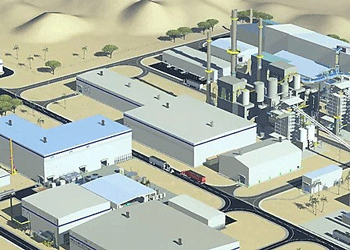 Saudi-Dutch JV awards ‘supercentre’ metals reclamation project
Saudi-Dutch JV awards ‘supercentre’ metals reclamation project22 December 2025
-
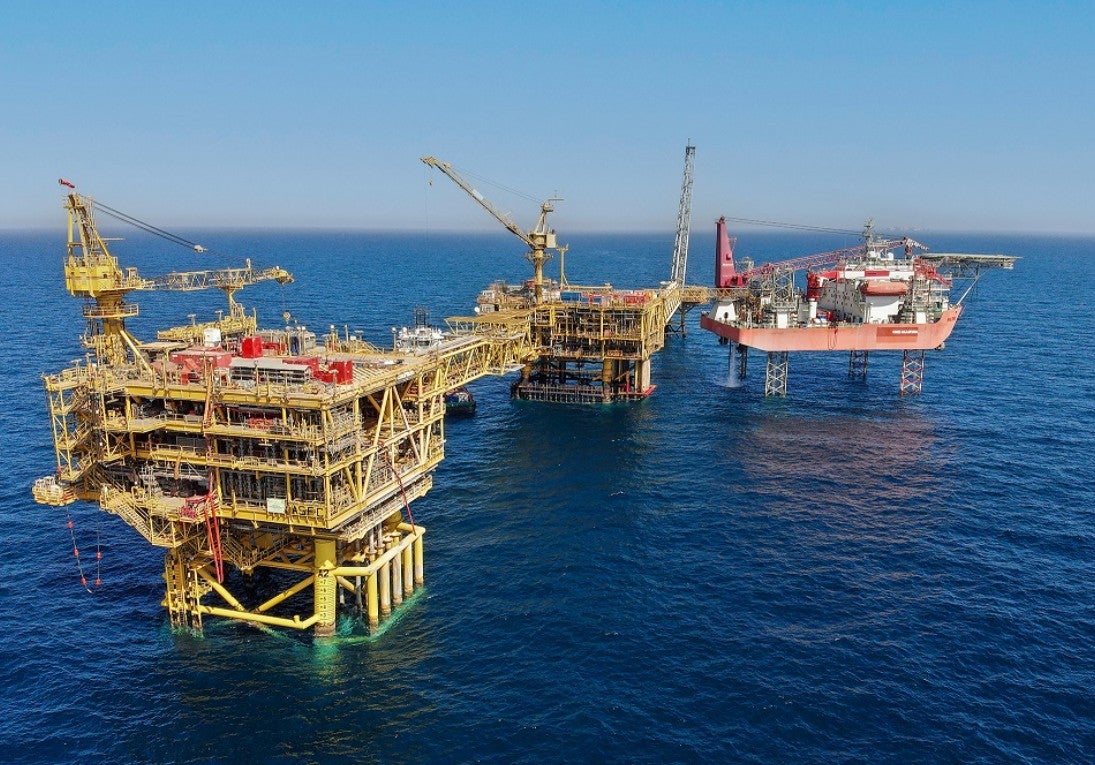 QatarEnergy LNG awards $4bn gas project package
QatarEnergy LNG awards $4bn gas project package22 December 2025
All of this is only 1% of what MEED.com has to offer
Subscribe now and unlock all the 153,671 articles on MEED.com
- All the latest news, data, and market intelligence across MENA at your fingerprints
- First-hand updates and inside information on projects, clients and competitors that matter to you
- 20 years' archive of information, data, and news for you to access at your convenience
- Strategize to succeed and minimise risks with timely analysis of current and future market trends

Related Articles
-
 Oman’s growth forecast points upwards
Oman’s growth forecast points upwards24 December 2025

MEED’s January 2026 report on Oman includes:
> COMMENT: Oman steadies growth with strategic restraint
> GVT & ECONOMY: Oman pursues diversification amid regional concerns
> BANKING: Oman banks feel impact of stronger economy
> OIL & GAS: LNG goals galvanise Oman’s oil and gas sector
> POWER & WATER: Oman prepares for a wave of IPP awards
> CONSTRUCTION: Momentum builds in construction sectorTo see previous issues of MEED Business Review, please click herehttps://image.digitalinsightresearch.in/uploads/NewsArticle/15306449/main.gif -
 December 2025: Data drives regional projects
December 2025: Data drives regional projects23 December 2025
Click here to download the PDF
Includes: Top inward FDI locations by project volume | Brent spot price | Construction output
MEED’s January 2026 report on Oman includes:
> COMMENT: Oman steadies growth with strategic restraint
> ECONOMY: Oman pursues diversification amid regional concerns
> BANKING: Oman banks feel impact of stronger economy
> OIL & GAS: LNG goals galvanise Oman’s oil and gas sector
> POWER & WATER: Oman prepares for a wave of IPP awards
> CONSTRUCTION: Momentum builds in construction sectorTo see previous issues of MEED Business Review, please click herehttps://image.digitalinsightresearch.in/uploads/NewsArticle/15306140/main.gif -
 Local firm bids lowest for Kuwait substation deal
Local firm bids lowest for Kuwait substation deal22 December 2025
The local Al-Ahleia Switchgear Company has submitted the lowest price of KD33.9m ($110.3m) for a contract to build a 400/132/11 kV substation at the South Surra township for Kuwait’s Public Authority for Housing Welfare (PAHW).
The bid was marginally lower than the two other offers of KD35.1m and KD35.5m submitted respectively by Saudi Arabia’s National Contracting Company (NCC) and India’s Larsen & Toubro.
PAHW is expected to take about three months to evaluate the prices before selecting the successful contractor.
The project is one of several transmission and distribution projects either out to bid or recently awarded by Kuwait’s main affordable housing client.
This year alone, it has awarded two contracts worth more than $100m for cable works at its 1Z, 2Z, 3Z and 4Z 400kV substations at Al-Istiqlal City, and two deals totalling just under $280m for the construction of seven 132/11kV substations in the same township.
Most recently, it has tendered two contracts to build seven 132/11kV main substations at its affordable housing project, west of Kuwait City. The bid deadline for the two deals covering the MS-01 through to MS-08 substations is 8 January.
https://image.digitalinsightresearch.in/uploads/NewsArticle/15305745/main.gif -
 Saudi-Dutch JV awards ‘supercentre’ metals reclamation project
Saudi-Dutch JV awards ‘supercentre’ metals reclamation project22 December 2025
The local Advanced Circular Materials Company (ACMC), a joint venture of the Netherlands-based Shell & AMG Recycling BV (SARBV) and local firm United Company for Industry (UCI), has awarded the engineering, procurement and construction (EPC) contract for the first phase of its $500m-plus metals reclamation complex in Jubail.
The contract, estimated to be worth in excess of $200m, was won by China TianChen Engineering Corporation (TCC), a subsidiary of China National Chemical Engineering Company (CNCEC), following the issue of the tender in July 2024.
Under the terms of the deal, TCC will process gasification ash generated at Saudi Aramco’s Jizan refining complex on the Red Sea coast to produce battery-grade vanadium oxide and vanadium electrolyte for vanadium redox flow batteries. AMG will provide the licensed technology required for the production process.
The works are the first of four planned phases at the catalyst and gasification ash recycling ‘Supercentre’, which is located at the PlasChem Park in Jubail Industrial City 2 alongside the Sadara integrated refining and petrochemical complex.
Phase 2 will expand the facility to process spent catalysts from heavy oil upgrading facilities to produce ferrovanadium for the steel industry and/or additional battery-grade vanadium oxide.
Phase 3 involves installing a manufacturing facility for residue-upgrading catalysts.
In the fourth phase, a vanadium electrolyte production plant will be developed.
The developers expect a total reduction of 3.6 million metric tonnes of carbon dioxide emissions a year when the four phases of the project are commissioned.
SARBV first announced its intention to build a metal reclamation and catalyst manufacturing facility in Saudi Arabia in November 2019. The kingdom’s Ministry of Investment, then known as the Saudi Arabian General Investment Authority (Sagia), supported the project.
In July 2022, SARBV and UCI signed the agreement to formalise their joint venture and build the proposed facility.
The project has received support from Saudi Aramco’s Namaat industrial investment programme. Aramco, at the time, also signed an agreement with the joint venture to offtake vanadium-bearing gasification ash from its Jizan refining complex.
Photo credit: SARBV
https://image.digitalinsightresearch.in/uploads/NewsArticle/15305326/main.gif -
 QatarEnergy LNG awards $4bn gas project package
QatarEnergy LNG awards $4bn gas project package22 December 2025
QatarEnergy LNG, a subsidiary of state-owned QatarEnergy, has awarded the main engineering, procurement, construction and installation (EPCI) contract for a major package for the second phase of its North Field Production Sustainability (NFPS) project.A consortium comprising the Italian contractor Saipem and state-owned China Offshore Oil Engineering Company (COOEC) has secured the EPCI contract for the COMP5 package. The contract value is $4bn, with Saipem declaring its share to be worth $3.1bn.
Milan-headquartered Saipem said the contract will run for about five years. The scope of work comprises engineering, procurement, fabrication and installation of two compression complexes, each including a compression platform, a living quarters platform, a flare platform supporting the gas combustion system, and the related interconnecting bridges. Each complex will have a total weight of about 68,000 tonnes.
Offshore installation operations will be carried out by Saipem’s De He construction vessel in 2029 and 2030.
MEED previously reported that the following contractors submitted bids for the NFPS phase two COMP5 package:
- Larsen & Toubro Energy Hydrocarbon (India)
- McDermott (US)
- Saipem/China Offshore Oil Engineering Company (Italy/China)
QatarEnergy LNG, formerly Qatargas, is said to have issued the tender for the NFPS phase two COMP5 package in the first quarter of the year.
Contractors submitted technical bids for the COMP5 package in late June, while commercial bids were submitted by 8 October, as per sources.
Based upon initial evaluation of bids by QatarEnergy LNG, L&TEH has emerged as the lowest bidder for the COMP5 package, followed by McDermott, with the consortium of Saipem and COOEC in third place, MEED reported in late October.
In the weeks following that, the project operator is said to have engaged all bidders for a final round of negotiations, during which the consortium of Saipem and COOEC is believed to have “clinched the deal”, according to sources.
The detailed scope of work on the COMP5 package covers the EPCI work on the following:
- Two gas compression platforms, each weighing 30,000-35,000 tonnes, plus jacket
- Two living quarters platforms, plus jacket
- Two gas flare platforms, plus jacket
- Brownfield modification work at two complexes
NFPS scheme
QatarEnergy’s North Field liquefied natural gas (LNG) expansion programme requires the state enterprise to pump large volumes of gas from the North Field offshore reserve to feed the three phases of the estimated $40bn-plus programme.
QatarEnergy has already invested billions of dollars in engineering, procurement and construction works on the two phases of the NFPS project, which aims to maintain steady gas feedstock for the North Field LNG expansion phases.
The second NFPS phase will mainly involve building gas compression facilities to sustain and gradually increase gas production from Qatar’s offshore North Field gas reserve over the long term.
Saipem has been the most successful contractor on the second NFPS phase, securing work worth a total of $8.5bn.
QatarEnergy LNG awarded Saipem a $4.5bn order in October 2022 to build and install gas compression facilities. The main scope of work on the package, which is known as EPCI 2, covers two large gas compression complexes that will comprise decks, jackets, topsides, interconnecting bridges, flare platforms, living quarters and interface modules.
The gas compression complexes – CP65 and CP75 – will weigh 62,000 tonnes and 63,000 tonnes, respectively, and will be the largest fixed steel jacket compression platforms ever built.
Following that, Saipem won combined packages COMP3A and COMP3B of the NFPS project’s second phase in September last year.
The scope of work on the combined packages encompasses the EPCI of a total of six platforms, approximately 100 kilometres (km) of corrosion resistance alloy rigid subsea pipelines of 28-inches and 24-inches diameter, 100km of subsea composite cables, 150km of fibre optic cables and several other subsea units.
Separately, QatarEnergy LNG awarded McDermott the contract for the NFPS second phase package known as EPCI 1, or COMP1, in July 2023. The scope of work on the estimated $1bn-plus contract is to install a subsea gas pipeline network at the North Field gas development.
In March this year, India’s Larsen & Toubro Energy Hydrocarbon (LTEH) won the main contract for the combined 4A and 4B package, which is the fourth package of the second phase of the NFPS project and is estimated to be valued at $4bn-$5bn.
The main scope of work on the package is the EPCI of two large gas compression systems that will be known as CP8S and CP4N, each weighing 25,000-35,000 tonnes. The contract scope also includes compression platforms, flare gas platforms and other associated structures.
LTHE sub-contracted detailed engineering and design works on the combined 4A and 4B package to French contractor Technip Energies.
NFPS first phase
Saipem is also executing the EPCI works on the entire first phase of the NFPS project, which consists of two main packages.
Through the first phase of the NFPS scheme, QatarEnergy LNG aims to increase the early gas field production capacity of the North Field offshore development to 110 million tonnes a year.
QatarEnergy LNG awarded Saipem the contract for the EPCI package in February 2021. The package is the larger of the two NFPS phase one packages and has a value of $1.7bn.
Saipem’s scope of work on the EPCI package encompasses building several offshore facilities for extracting and transporting natural gas, including platforms, supporting and connecting structures, subsea cables and anti-corrosion internally clad pipelines.
The scope of work also includes decommissioning a pipeline and other significant modifications to existing offshore facilities.
In addition, in April 2021, QatarEnergy LNG awarded Saipem two options for additional work within the EPCI package, worth about $350m.
QatarEnergy LNG awarded Saipem the second package of the NFPS phase one project, estimated to be worth $1bn, in March 2021.
Saipem’s scope of work on the package, which is known as EPCL, mainly covers installing three offshore export trunklines running almost 300km from their respective offshore platforms to the QatarEnergy LNG north and south plants located in Ras Laffan Industrial City.
Saipem performed the front-end engineering and design work on the main production package of the first phase of the NFPS as part of a $20m contract that it was awarded in January 2019. This provided a competitive advantage to the Italian contractor in its bid to win the package.
https://image.digitalinsightresearch.in/uploads/NewsArticle/15305330/main2239.jpg

